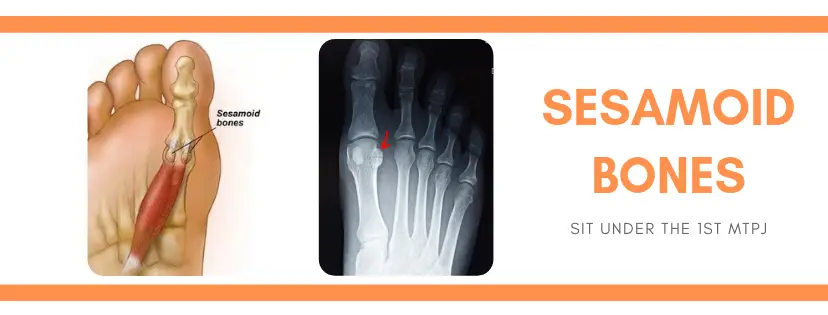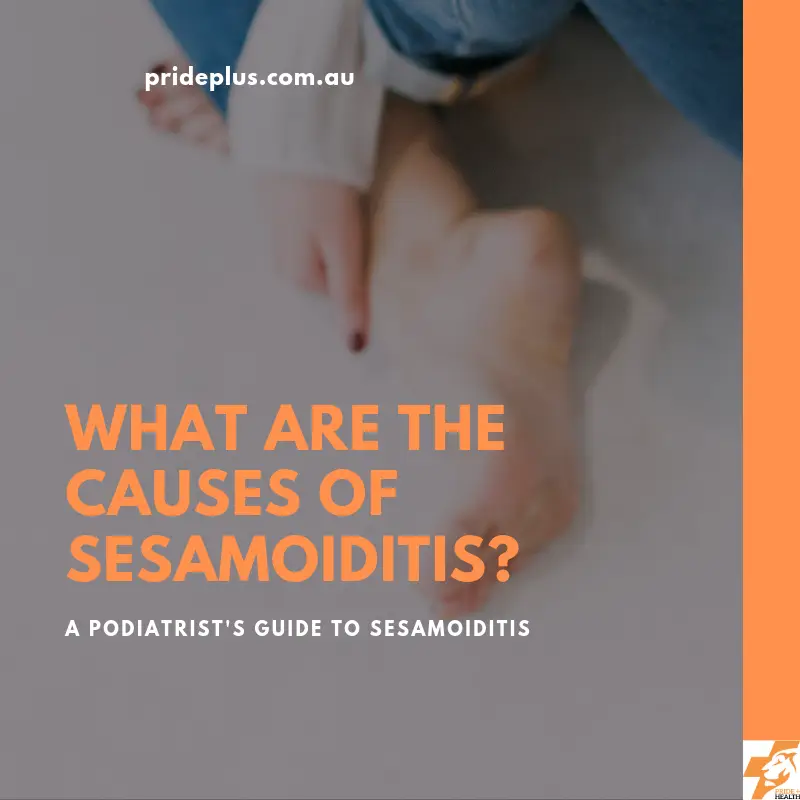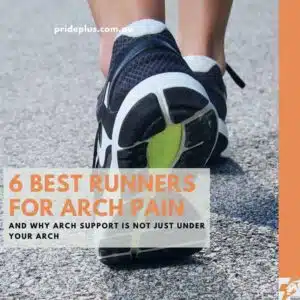Sesamoiditis is the irritation and often inflammation of the sesamoid bones which sit under the big toe joint in the foot. Our big toe joint is known as the 1st meta-tarso-phalangeal joint or 1st MTPJ for short. It is also one of the hardest working joints in our body with up to 8 x body weight as a bending force going through that joint when on the move.
To protect the joint and to increase the pull from the big toe flexor muscles (known as flexor hallucis longus or FHL) we have two sesamoid bones that sit on the plantar (underneath side) of the 1st MTPJ.
Sesamoid Bones
The fibular (or lateral) sesamoid bone and the tibial (medial) sesamoid bone work in the same manner as the patella (the knee cap) to increase muscle force by extending the lever arm around the joint for maximum efficiency. They usually sit next to each other within the tendon directly under the 1st MTPJ margin although with conditions such as bunions (known as hallux-abducto-valgus) the sesamoid bones can move around under the joint more.

Now most of us have two oval/egg shaped sesamoid bones under our big toe joint but there are quite a few people who have three or more, usually in the form of a bipartite sesamoid bone. A bipartite sesamoid bone is where there are two bones held together with thick fibrous tissue making up essentially a single sesamoid bone. As the fibrous tissue isn’t as strong as normal bone these are more likely to develop sesamoiditis.
So now that we know what the sesamoids are (bones!), where they live (under the big toe joint) and what they do (multiply muscle force and protect!) we can get stuck into when problems occur – sesamoiditis.
Sesamoiditis
As we have discussed many times before, every tissue in our bodies has a goldilocks zone of optimal stress where they can work comfortably. If we work them outside this zone we often get pain and pathology as we over stress them. Sesamoiditis is just this, over stress or working our sesamoid bones outside of their goldilocks zone.
Some of the main factors for developing sesamoiditis are our foot shape and whether we have bipartite sesamoid bones in the first place. Really high arched cavoid feet tend to place greater pressure on their big toe joints and thus the sesamoid bones as well.
And footwear such as football boots with long, hard cleats or stops directly under the big toe joint put more pressure on the sesamoids. This can lead to a greater chance of sesamoiditis occurring. Not surprisingly high heeled shoes also do this.
Activities where there is a lot of forefoot loading with the big toe extended, like sprinting and dancing, are prime triggers for sesamoiditis as well.
How to treat Sesamoiditis
In the early stages, sesamoiditis feels like an ache through the big toe joint and can become quite sharp when extra pressure is placed on the sesamoid bones. Addressing the factors that have lead to the sesamoid bones working harder than they can handle is where your expert PridePlus Health podiatrist can provide immediate relief. Often some simple padding, a footwear change or an exercise or two can lead to enough load optimisation for healing to occur faster than the over stress on the sesamoid bones.
If left untreated the risk with sesamoiditis is that it can turn into a condition called avascular necrosis which is where the sesamoid bones start to crumble and break down further. This is due to the sesamoid bones location within a tendon where they don’t have a fantastic blood supply like a lot of other bones and necrosis (bone death) is a greater risk.
Sesamoiditis can also be confused for an acute fracture of a sesamoid. This is particularly true if it’s a bipartite sesamoid as they can look quite similar to the untrained eye on x-rays.
As we discussed previous early assessment, diagnosis and planning are essential in high-quality treatment for sesamoiditis.




